Holographic Sights vs Red Dot Sights - How do they work?
Comparison between red dot vs holographic sights, their battery-life, weight, reticle options, drawbacks, durability, and how they work.
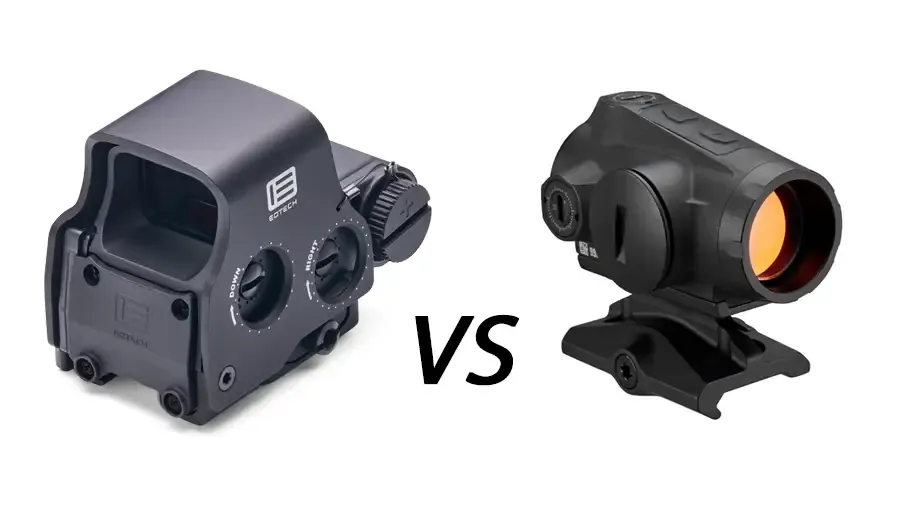
Our team independently reviews products and writes articles for the gun community. The products linked in our stories help us earn commissions that support our testing.
Written by Alec S
- Last Updated Nov 7, 2024
It can be tough to tell the difference between holographic and red dot sights. With so many options, I decided to dive deep into both categories to see what sets them apart. Here’s my firsthand experience comparing the two, their pros and cons, and the factors to consider when deciding which one might be the best fit for you.
- How do holographic and red dot sights work?
- Recommended Holographic Sights
- Recommended Red Dot Sights
- Sight Picture First Impressions: Holographic vs Red Dot Sights
- Reticle Design & Options
- Clarity and Parallax
- Battery Life, Durability, and Weight
- Price and Value for Money
- Final Verdict: Which Sight Should You Choose?
Table of Contents
How do holographic and red dot sights work?
Holographic sights use some fancy technology to project the reticle, while red dot sights are pretty straightforward. Here’s a detailed breakdown of how they work:
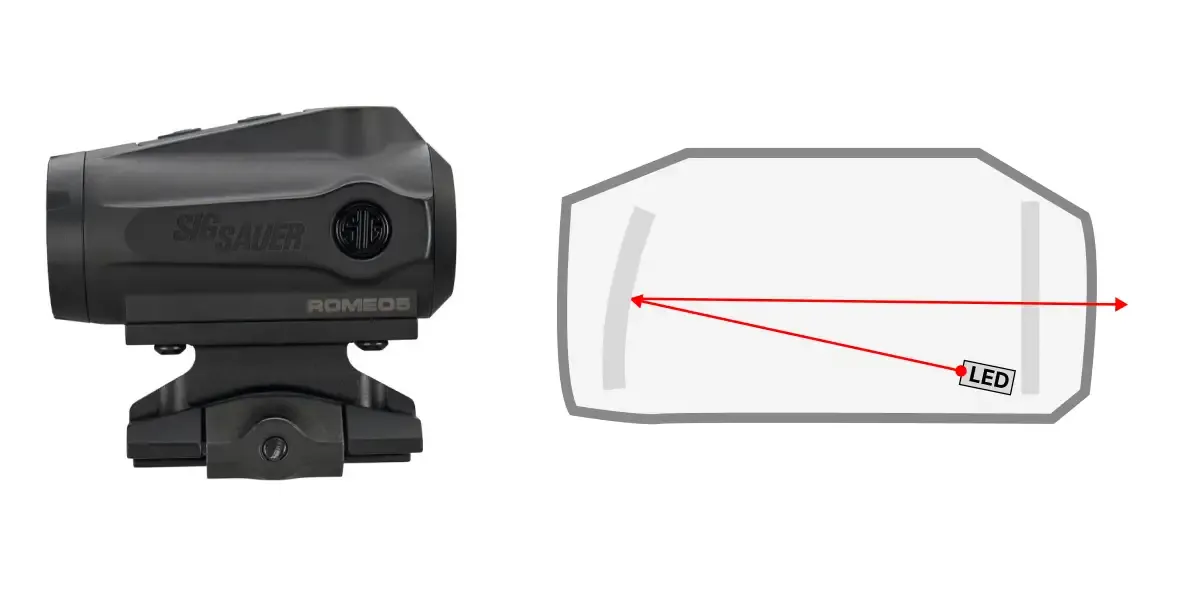
Red dot sights use an LED to project the reticle onto a spherical or curved mirror. This mirror has a special coating that allows all light to pass through, except for the light from the LED. This allows us to see the reticle while still being able to see through the optic. This coating also prevents someone on the other side of the optic from seeing your reticle.
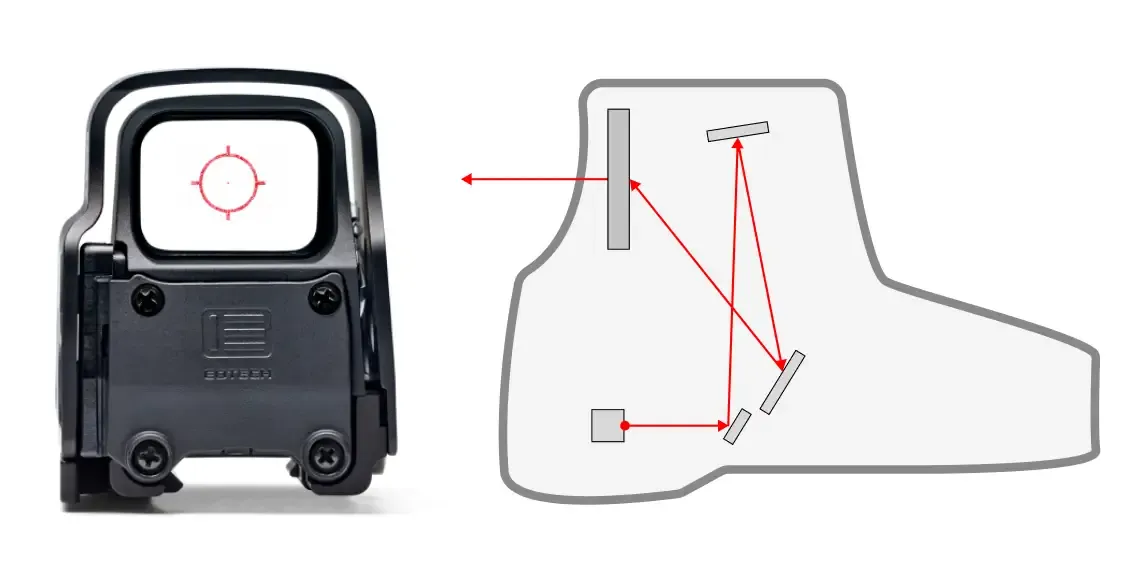
Holographic sights are shipped from the factory with a "holographic film" that contains the predesigned shape of the reticle. These optics use an actual laser that projects the light onto a holographic grating, a collimating reflector, and then onto the holographic film. When the holographic film is illuminated, the reticle becomes visible within the optic.
Best Holographic Sights
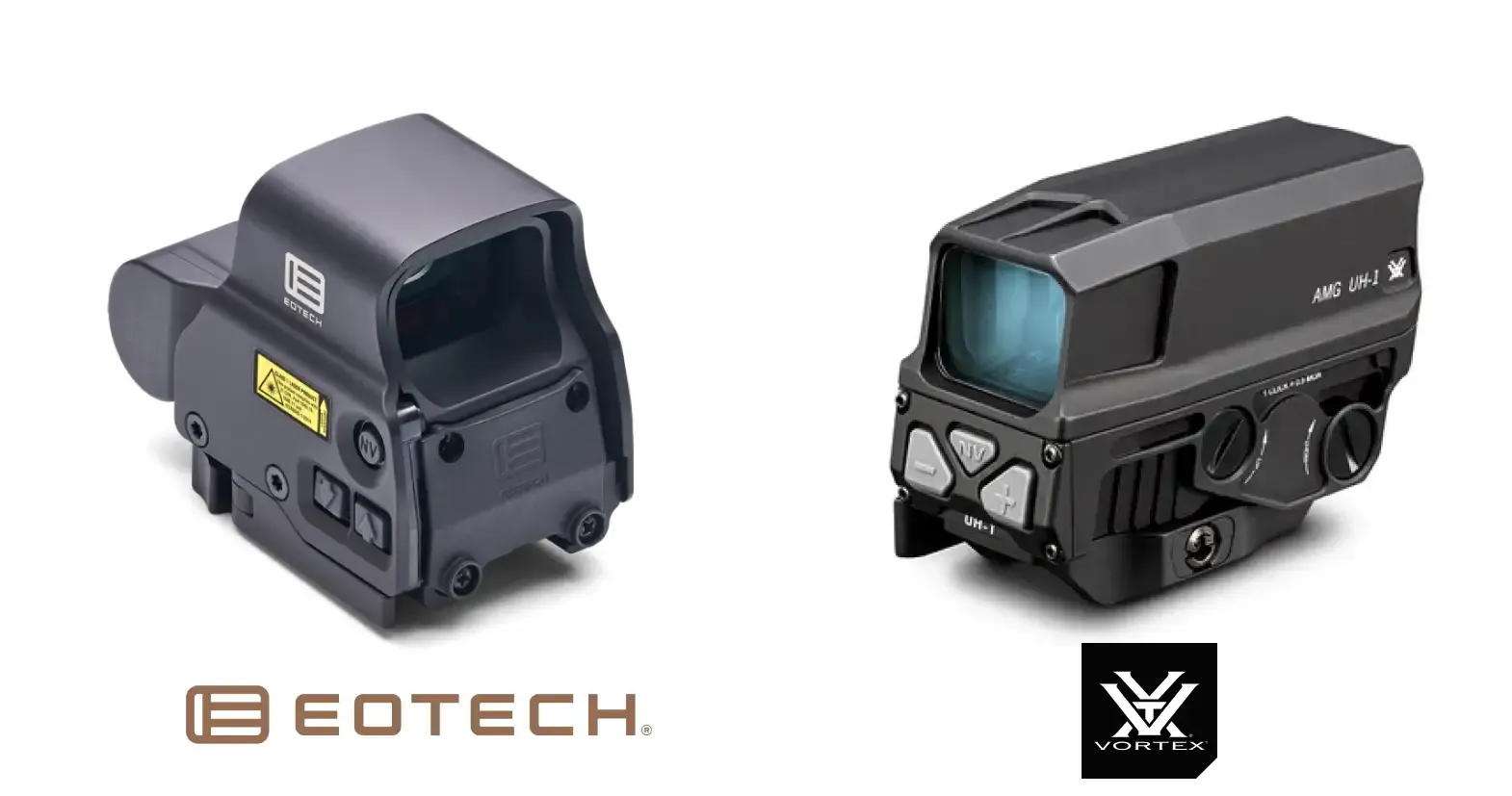
There are only two “true” holographic sight manufacturers at the moment: Eotech & Vortex. Vortex offers the Vortex AMG UH-1, while Eotech offers several models that differ by reticle, night vision compatibility, and mount. Eotech has been producing holographic sights since 1996 and has made them famous for incredible reliability in military units all over the world. Vortex released the AMG UH-1 in 2020 to compete with Eotech. Unlike holographic sights, red dots have countless manufacturers and models, offering a better selection to choose from.
At the time of writing, Eotechs range from $500 - $750 while the Vortex AMG UH-1 sits at about $600. We’ll discuss these in more detail later.
Best Red Dot Sights
Red dot sights can range in price: the Sig Sauer Romeo 5 is an outstanding red dot for the money, featuring a 2 MOA dot reticle, IPX7 waterproofing, 40,000 hours of runtime (4.5 years), and motion activation, all for around $150.
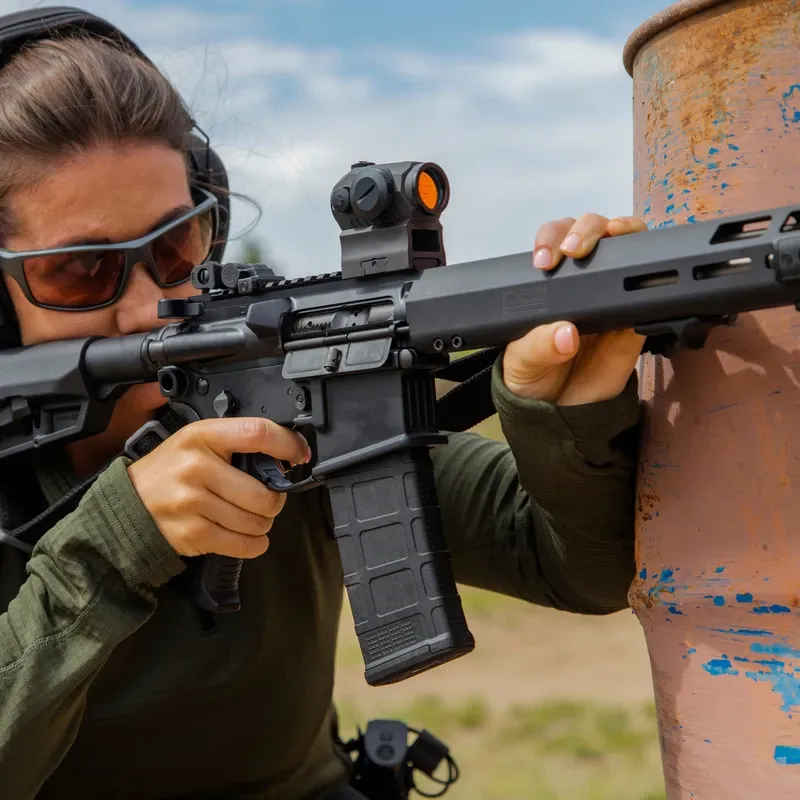
On the other end of the spectrum, Aimpoint red dots range from $500 - $1000 but have a proven track record in military and law enforcement for being incredibly durable. Somewhere in between these two we have a handful of great choices with different price points and specs.
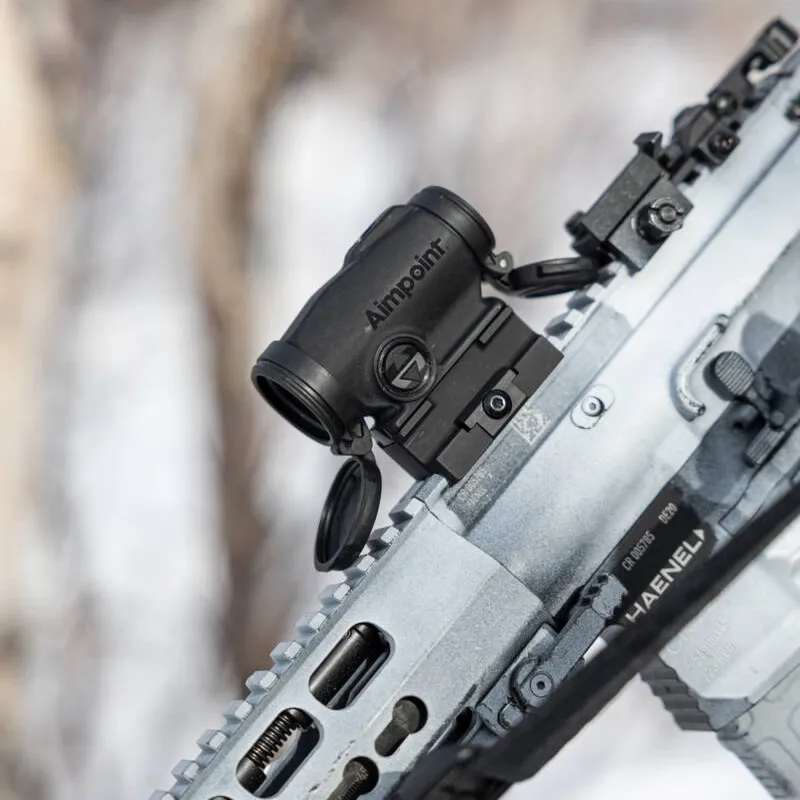
Sight Picture First Impressions: Holographic vs Red Dot Sights
The sight picture in holographic sights is a bit different from red dot sights. Most people’s first impression when shooting with a holographic sight is that the reticle is “floating” in front of the target, allowing them to focus more on the surroundings and target instead of the reticle.
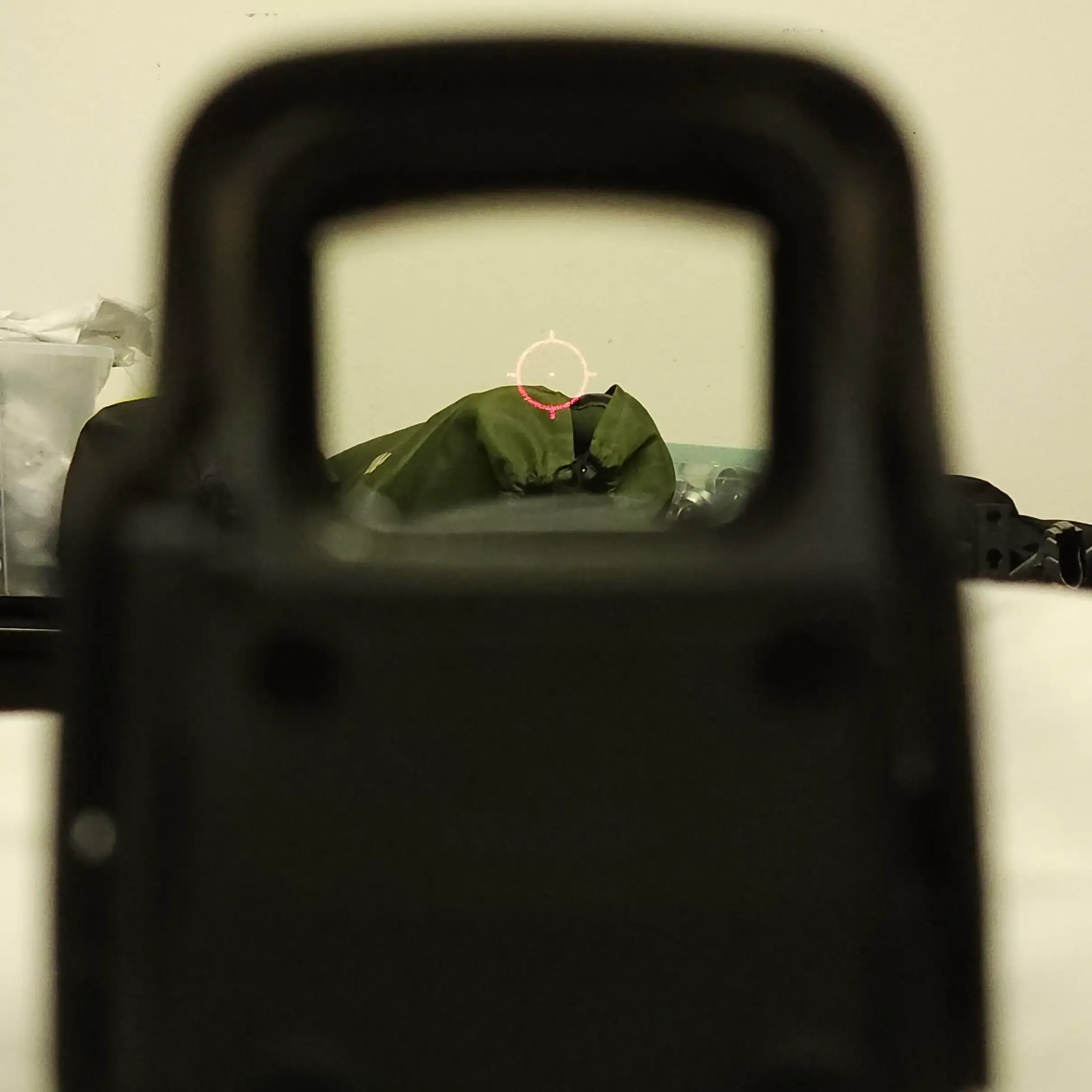
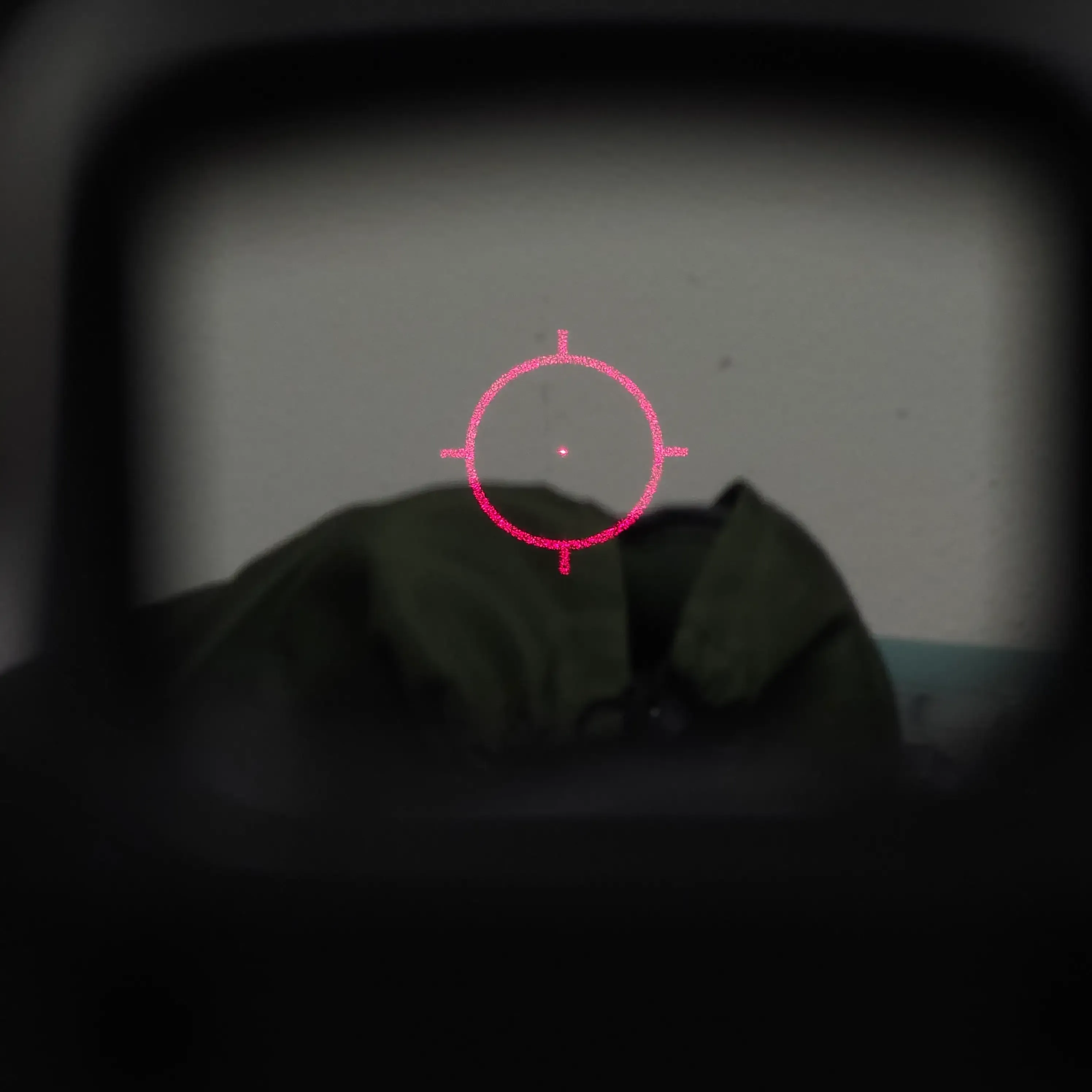
Eotech EXPS3 reticle (submitted by UA_Jordan)
Holographic sight picture: When looking through holographic sights like the Eotech XPS3 and the Vortex AMG UH-1, the reticle appears to float within the optic, unlike red dots where the reticle appears to be projected onto the glass of the optic. Eotechs and the Vortex AMG UH-1 typically have larger windows than red dot sights. This helps us see more while aiming down the sights, directing our vision down range where it belongs.
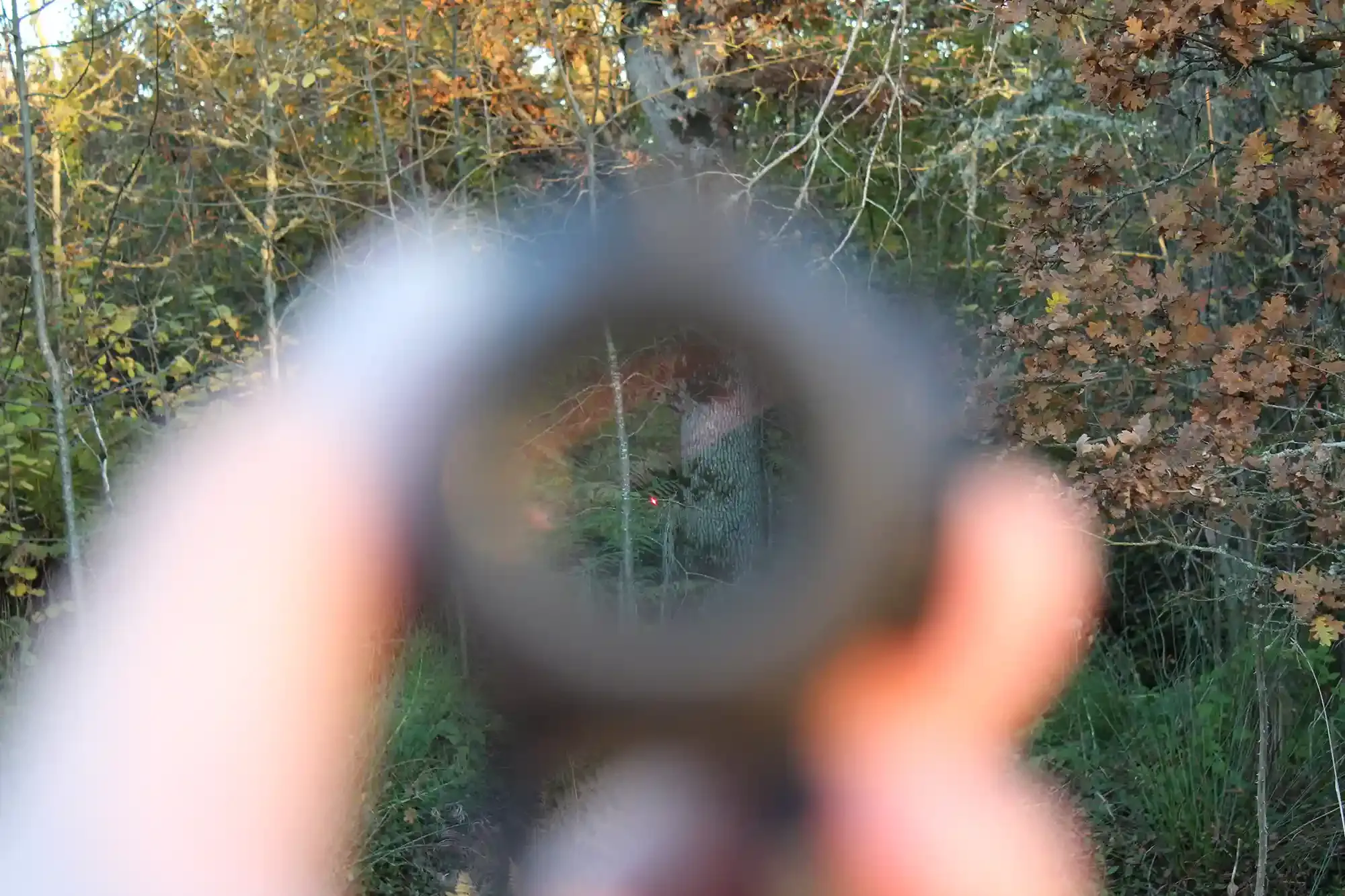
Red dot sight picture: Red dot sight reticles do not appear to float in these optics like their holographic counterparts, but they do appear a bit more “crisp.” Holographic sights tend to have a more grainy appearance (Eotechs specifically). In a high-pressure situation, I doubt this would be a consideration, but at the range and around the house there is a noticeable difference in the reticle “texture” with Eotechs.
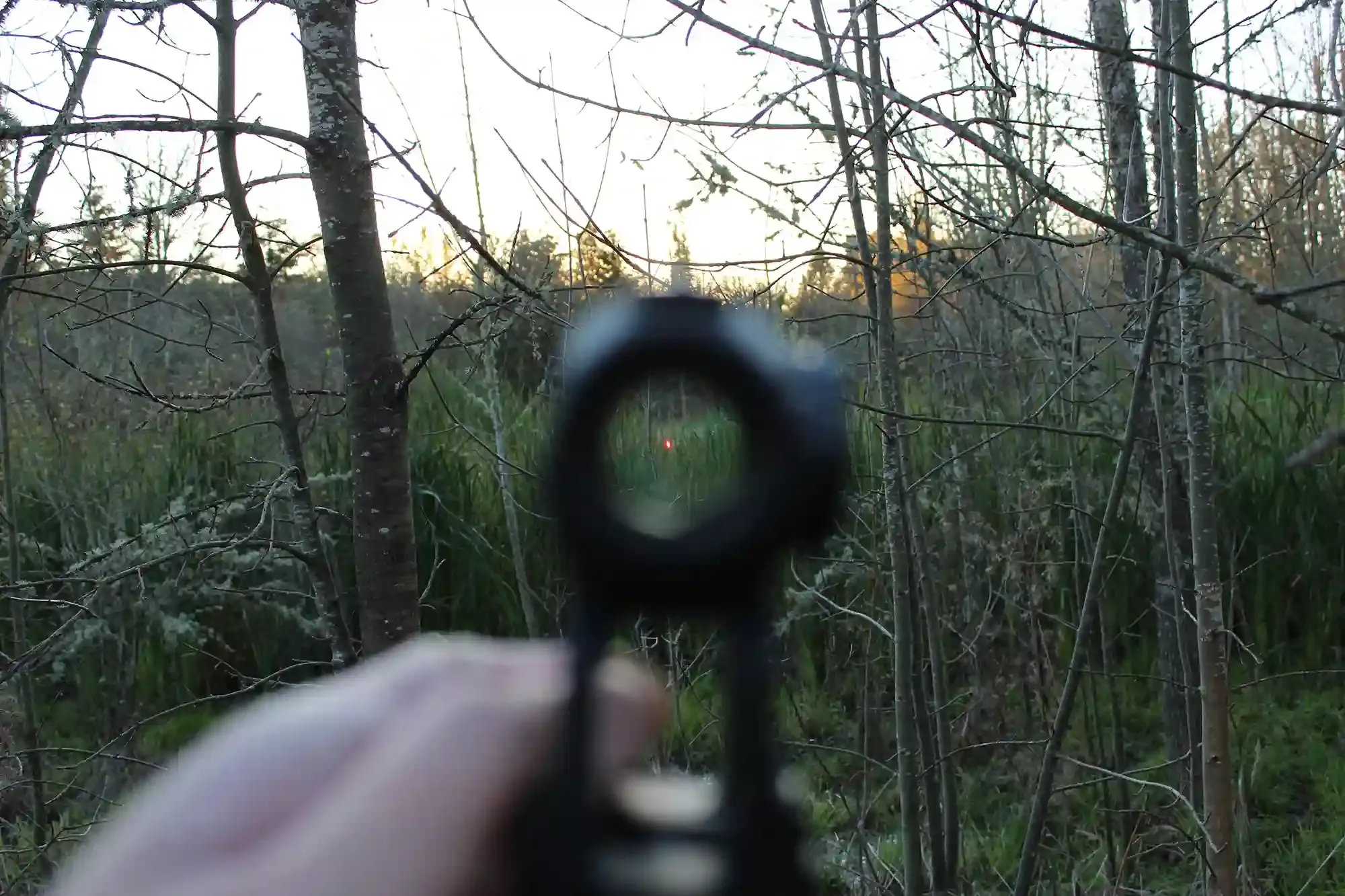
Regarding which is better, this really comes down to personal preference and what you like better for sight picture. With holographic sights you'll typically get a larger window and that nice "floating" reticle effect. Red dots will offer lower price points and more models/manufacturers to choose from.
Reticle Design & Options
Holographic sights have been associated with the classic “ring” and dot combination thanks to Eotech, but this reticle style can be found on many of today’s red dots as well. Brands like Holosun and Sig Sauer have created red dot sights with multiple reticle options built into a single optic. With so many options available, you can generally find just about any reticle style for red dots.
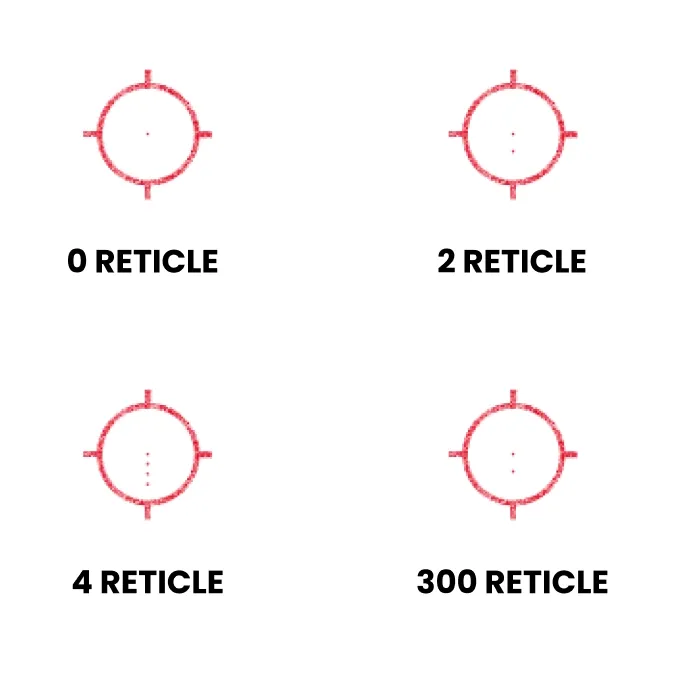
Some of Eotech's reticle options
Holographic sight reticle options: Given that there are only a few models to choose from, reticle selection is pretty straightforward with holographic sights. Eotech offers a few different reticles to choose from, some BDC reticles, 2-dot and 3-dot reticles. At the time of writing this, the Vortex AMG UH-1 only has one reticle option, which has a “ring” and dot combination.
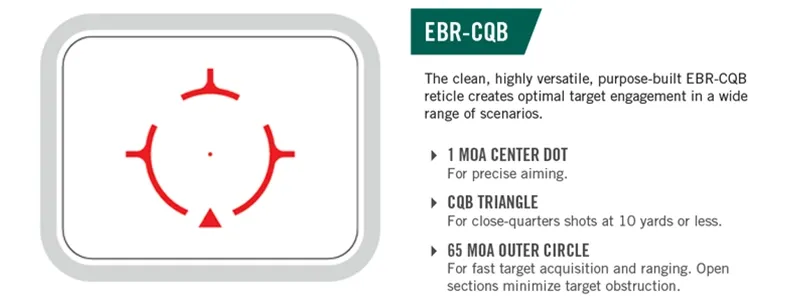
Vortex AMG UH-1 Gen II reticle
Red dot reticles: Many of the red dot sights available today offer a dot, circle + dot, or the ability to switch between multiple reticle choices which is really nice.
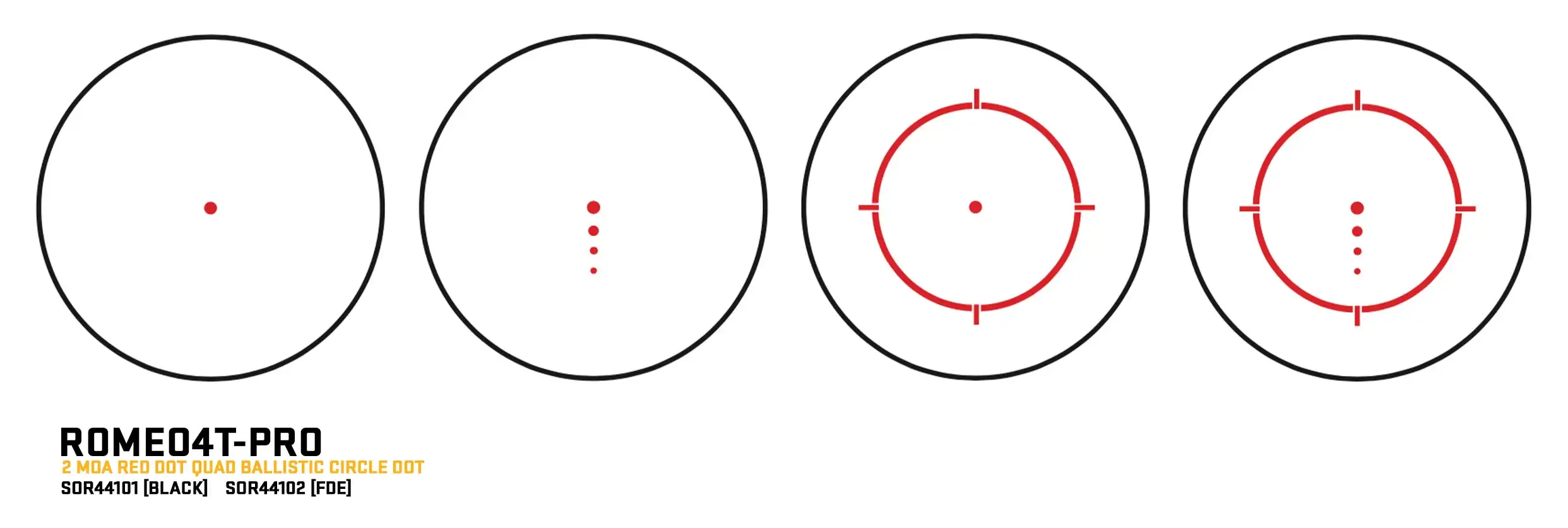
Red dots like the Sig Romeo 4T Pro have multiple reticle options
Clarity and Parallax
Parallax is the effect where the reticle position shifts as you move your head. All optics have some degree of parallax, but holographic sights have very little thanks to the way they project the reticle. Less parallax means better shot placement when you are on the move or don’t have a consistent cheek weld.
Red dot sights also have good parallax correction (although holographics tend to be slightly better). At certain extreme angles, the red dot can shift slightly, which could potentially throw off a shot at longer distances.
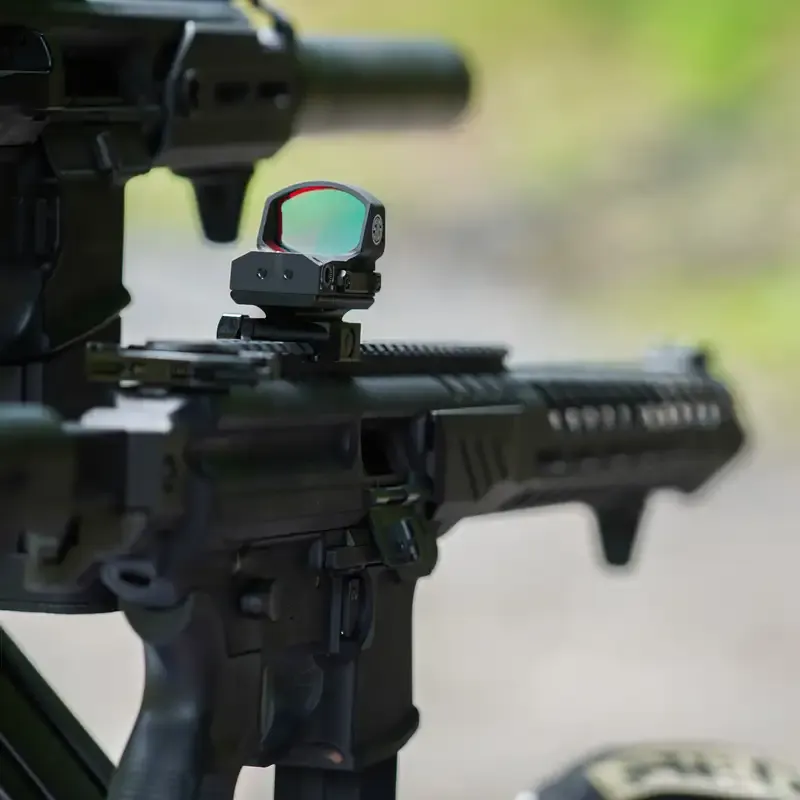
Takeaway: Both red dots and holographics have minimal parallax, and should be inconsequential for the most part. For shooters who need pinpoint accuracy in dynamic or high-movement scenarios, holographic sights’ minimal parallax give them a slight advantage here.
Battery Life, Durability, and Weight
Battery life and durability are crucial for any shooter, and here’s a big difference between the two sights:
Red Dot Sight: Red dots tend to have fantastic battery life. Average battery life for most red dot sights is longer than 25,000+ hours (or three years of continuous use).
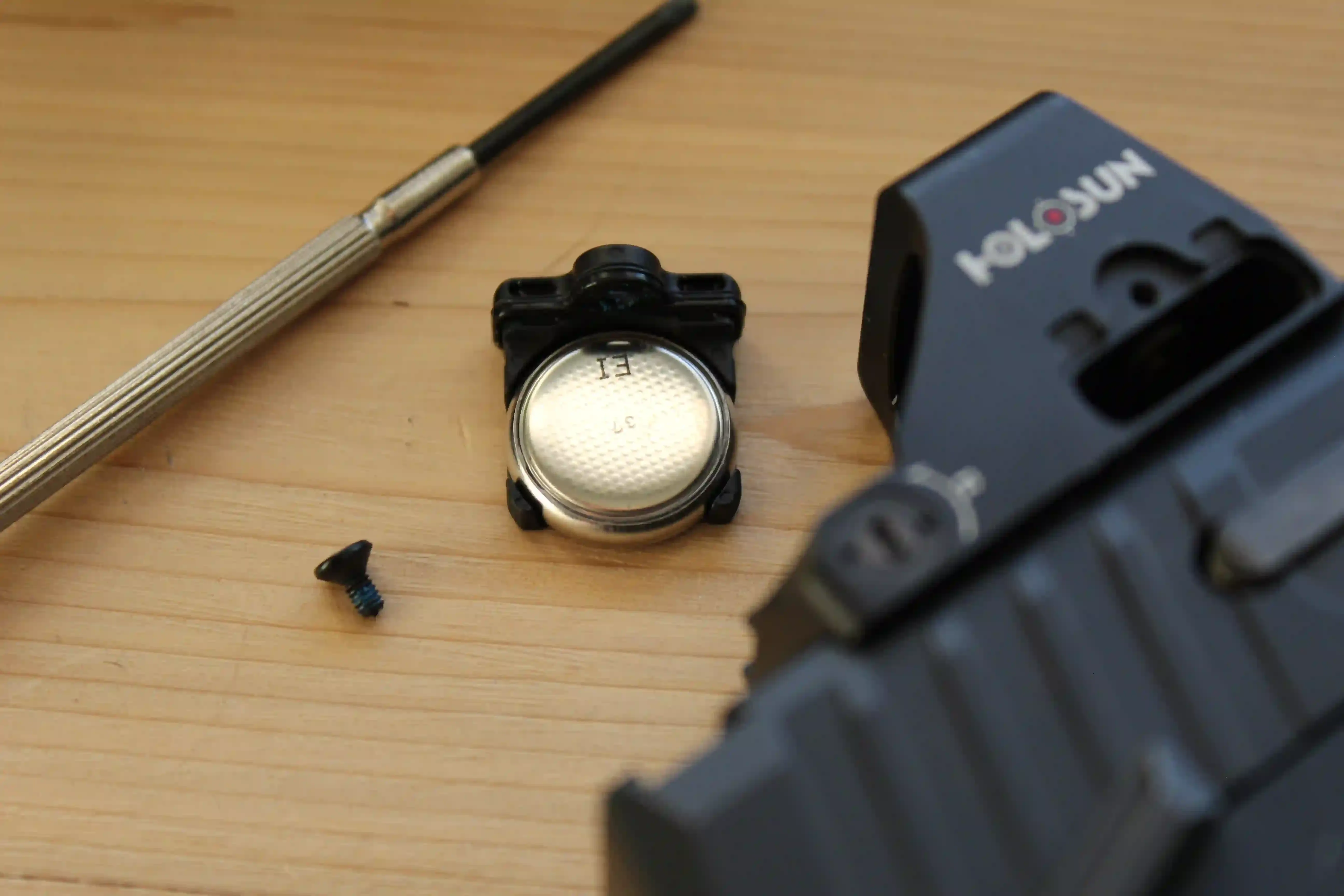
Holographic Sight: In comparison, the holographic sights consume significantly more power. Eotech and Vortex advertise only 1,000 hours (little over a month) of battery life at medium brightness.
In terms of durability, Eotechs have long made a name for themselves as indestructible which has associated holographic sights with ruggedness. Used by US SOCOM, Marines, and some Army units, Eotech has proven to be a reliable manufacturer of holographic sights. Eotechs also have a protective aluminum shroud around them that helps protect the optic and internals from taking a beating.
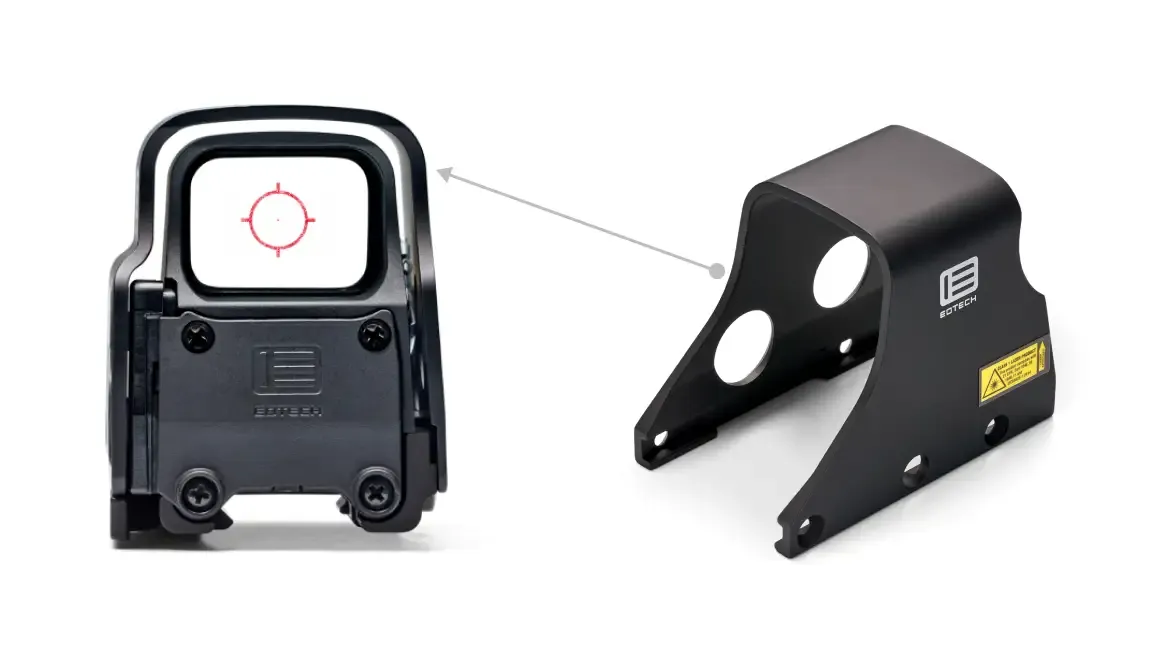
Eotech's use a protective hood for extra durability
Red dot sights have also made exceptional progress in the last few years. Many duty-grade models made by Aimpoint and Trijicon are incredibly durable, and manufacturers like Sig Sauer, Holosun, and Vortex have made red dot durability more common.
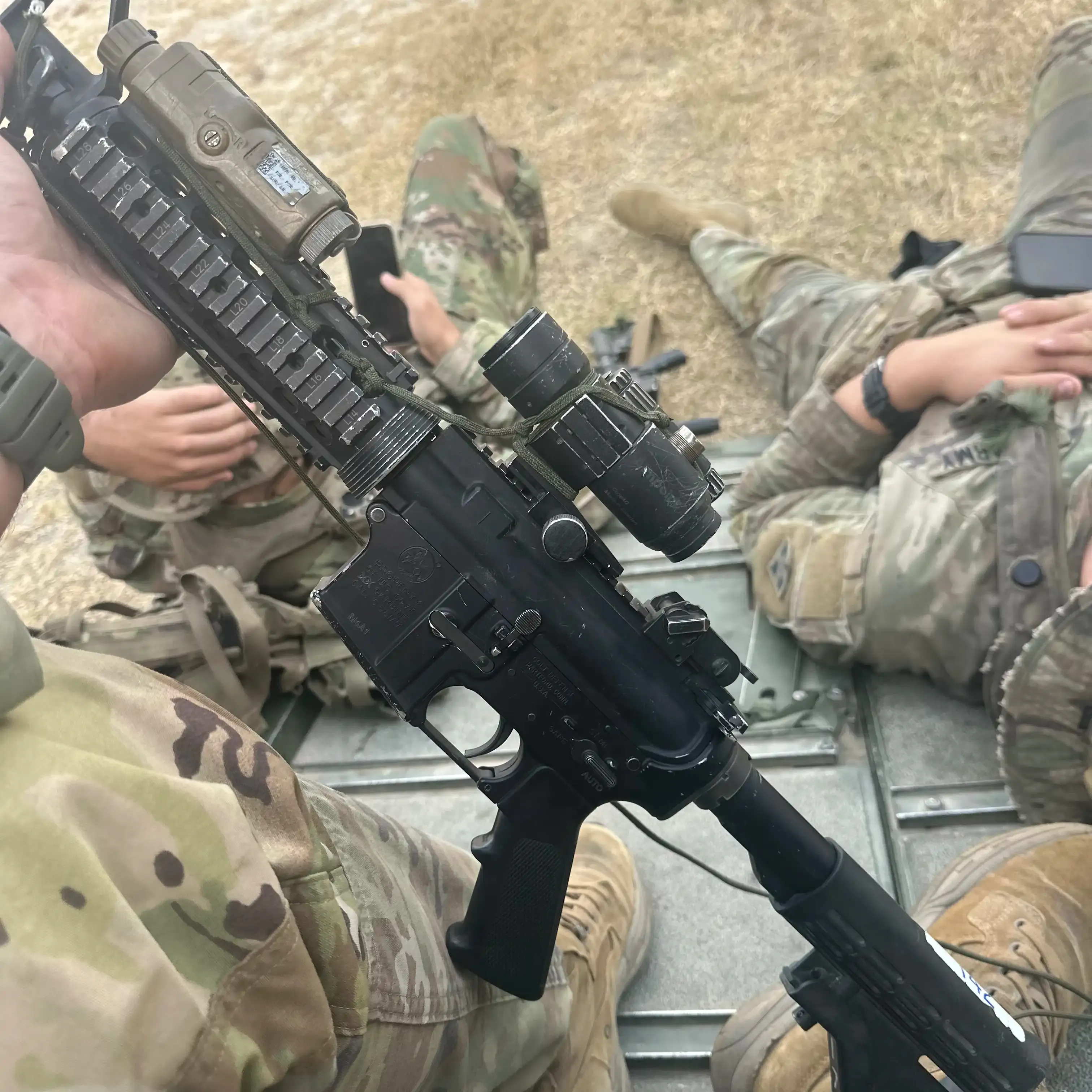
Aimpoint Comp M2 is used by the US Army
Although quite durable, holographic sights tend to be much heavier than red dot sights. The Eotech EXPS 3 weighs in at 11.2 oz while red dots like the Aimpoint T2 and the Holosun 403B weigh in at 4.6 oz and 2.8 oz respectively. Quite a big difference.
Final thought: Battery and weight-conscious users may prefer red dots, while durability can be found in both types of sights.
Price and Value for Money
Price is always a consideration, and it’s worth noting that holographic sights tend to be pricier than red dots. For shooters on a budget, a red dot sight offers a lot of bang for the buck and can be found at lower price points with great features.
Final Verdict: Which Sight Should You Choose?

In the end, both sights have their strengths. Holographic sights have been associated with incredible durability in exchange for increased weight, while red dots are typically lighter with durability depending on the model.
If you are looking for the best value possible, red dots definitely have more to offer at affordable price points while holographics pack some cool technology at a higher price point. If you like the larger window and sight picture associated with holographics, they may be worth the higher price tag.